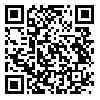BibTeX | RIS | EndNote | Medlars | ProCite | Reference Manager | RefWorks
Send citation to:
URL: http://jdisabilstud.org/article-1-2822-en.html
2- Assistant Professor, Department of Psychology, Shahroud Branch, Islamic Azad University, Shahroud, Iran
3- Assistant Professor, Department of Counseling and Psychology, Quchan Branch, University Islamic Azad, Quchan, Iran
Abstract
Background & Objective: Today, the Internet has become an essential tool for education, entertainment, information sharing, and communication, turning into an integral part of people's lives. The use of the Internet is expanding in various aspects of human life. So, it is crucial to understand how people interact with it. As disorders related to people's interactions with the Internet and social media are emerging as an important scientific research topic, various studies have examined the factors that play a role in addiction to virtual social networks. Therefore, this study aimed to model the addiction to virtual social networks based on early maladaptive schemas with the mediating role of spiritual identity in female adolescents.
Methods: Due to its nature, the present research was descriptive–analytical using structural equation modeling. The statistical population comprised all female high school students in Babol City, Iran, in the academic year of 2017–18. A total of 320 female students were selected using the available sampling method. Fifteen people are needed for each observed variable in modeling research (16). There are also 10 observed variables based on the conceptual model (Figure 1). Therefore, 150 people were needed in this study. However, because the participants may not complete all the questionnaires, 380 questionnaires were distributed among students, of which 320 were fully completed and returned. Therefore, in this study, to reduce the sampling error and prevent the dropout of the subjects, 320 people were selected using the available sampling method. To collect the data, we used the Addiction to Mobile–Based Social Network Questionnaire (Khajeh Ahmadi et al., 2016), the Young Early Maladaptive Schema Questionnaire (Young, 1990), and the Spiritual Identity Questionnaire (Rostami and Jokar, 2014). The inclusion criteria comprised female adolescents studying in high school, living with their parents, not suffering from a specific physical illness or mental disorder, and not taking special psychological treatment or medication. The exclusion criterion included a lack of cooperation in completing the questionnaires. The Pearson correlation was performed for data analysis, and the structural equation model was constructed using SPSS software version 24 and Amos version 24. The significance level of all tests was set at 0.05. In this study, ethical standards, including informed consent and confidentiality of the participants' information, were observed. The participants were also free to leave the research at any time. They provided personal data at the start of the test. They were assured that their information would remain confidential.
Results: The study of direct path coefficients between different paths showed that the maladaptive schema had significant direct relationships with spiritual identity (p=0.011, β=0.65) and addiction to virtual networks (p<0.001, β=0.65). However, the spiritual identity was not directly related to virtual network addiction (p=0.072, β=0.16). The fit indices of the fitted conceptual model were as follows: CMIN/df=3.9, GFI=0.95, NFI=0.939, RMSEA=0.071).
Conclusion: Based on the findings of this study, early maladaptive schemas in female adolescents will increase addiction to virtual social networks by affecting spiritual identity.
| Rights and permissions | |
 |
This work is licensed under a Creative Commons Attribution-NonCommercial 4.0 International License. |



